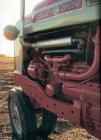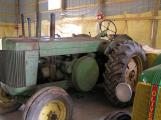3
Before gasoline engines were invented gasoline was considered to be a waste gas. It wasn't until an American chemist separated the elements of gasoline was the usefulness of gas discovered. However, it took until 1901 for a liquid form of gas to be developed which allowed it to be used for cooking and lighting. With gas in a liquid form, known as liquefied petroleum gas it could now be used in engines. This discovery lead to the gas engine helping make the farm tractor a much more efficient piece of equipment. Prior tractors were propelled by steam, taking 2 hours to get the tractor ready to work and then having to re-kindle the fire every three hours after to keep it alive.5
The liquid petroleum gas learning was painful as chemists discovered the instability of the compound. One suffered from serious burns well another was frozen to death as butane escaped from a high-pressure container. By the First World War chemist had learnt a great deal about the composition and volatility of liquid petroleum gas however, felt use outside industry was hazourdous. In wasn't until 1912 was gasoline use to power an automobile. Eventually leading to the idea to power the tractor with gas, however after several experiments it was concluded that butane was a cleaner more efficient fuel to power tractors. In 1934 the technology of carburetors was expanded in order to create a machine more suited to farmers needs, a machine able to withstand, dirty, dusty, high-vibration environments. Shortly there after a new factory model tractor powered by liquefied petroleum gas however, because of the Second World War gas became in shortage and vehicles began to rely on diesel.As society mechanize fuels were required to power equipment. Machines helped humans perform their jobs quicker and more efficiently, however it also allowed farmers, miners, and loggers to use a greater amount of the forest.


